The UT Cotton Scout School is scheduled for the last Friday of the month, May 27th, at the West Tennessee Research and Education Center (605 Airways Blvd, Jackson). There is no fee, and preregistration is not required. Registration begins at 8:00 AM with the program starting at 8:30. Content will include classroom and hands-on training with an optional go-to-the-field session after lunch. Topics covered will include cotton development and identification and symptoms of insect pests, plant diseases, and weeds.
Category Archives: Cotton
Seedling Cotton Burn from Early Post Applications
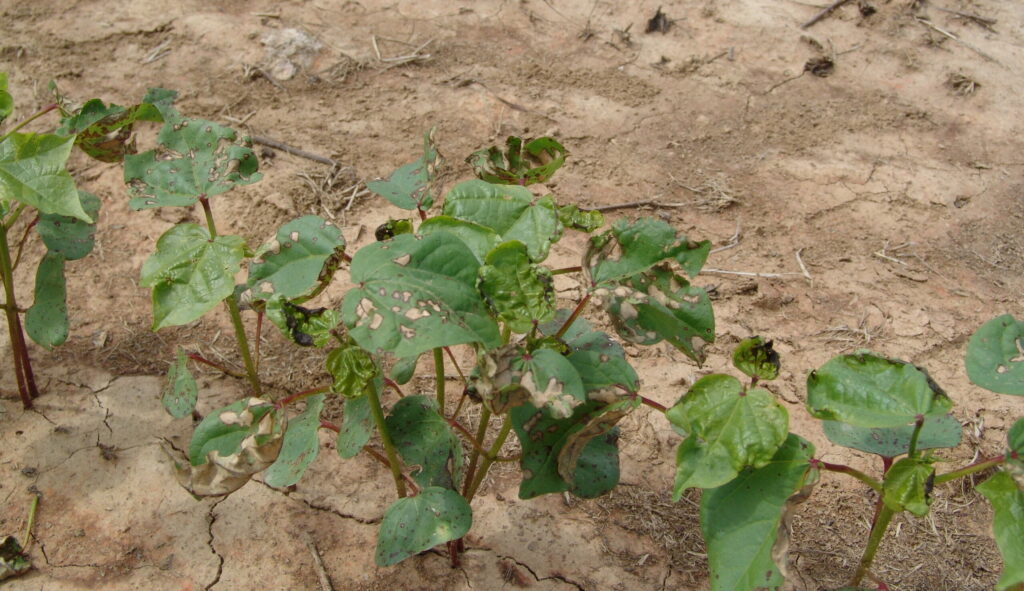
Weather permitting, this week will be the start of the early POST applications in cotton. These applications are often critical to not only curtail weed competition but to combat thrips injury as well. The biggest concern with these applications is injury to the young cotton plants. Traditionally, the main pesticides applied are a mixture of glyphosate plus either Dual, Outlook or Warrant plus Intrepid Edge or acephate. Those herbicides which contain a good surfactant in glyphosate with the oil formulations of the chloracetamide herbicides will always burn young cotton leaves. The typical cotton injury from those mixtures will range from 10 to 20% (Picture 1). Continue reading
Making the decision to replant and assessing injury from hail
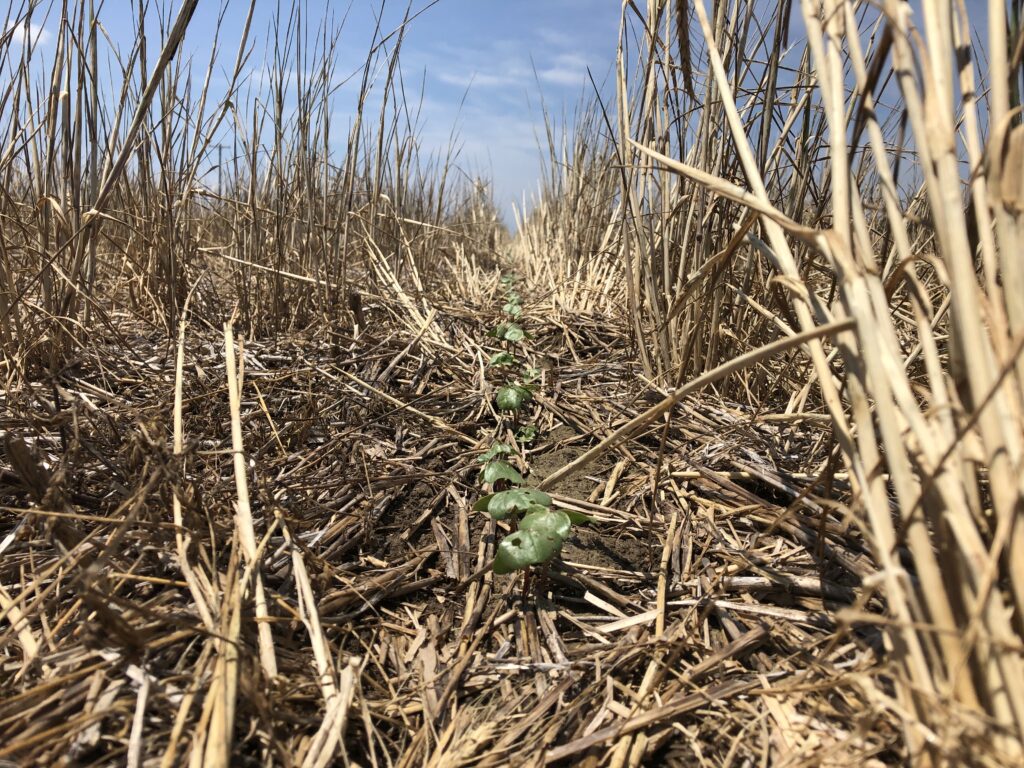 Strong thunderstorms brought heavy rainfall and isolated hail to some areas of the MidSouth last weekend (5/13-5/15). Reports of hail damage have not been widespread and many welcomed a rather helpful rainfall event. Still, those who caught hail are assessing their damaged stand and those who caught the heaviest rainfalls are trying to determine if a replant is warranted. In this blog, I summarize some recent research conducted by the MidSouth Cotton Specialists’ Working Group on hail damage and planting date/populations and discuss the applicability of those findings to our current situation. Continue reading
Strong thunderstorms brought heavy rainfall and isolated hail to some areas of the MidSouth last weekend (5/13-5/15). Reports of hail damage have not been widespread and many welcomed a rather helpful rainfall event. Still, those who caught hail are assessing their damaged stand and those who caught the heaviest rainfalls are trying to determine if a replant is warranted. In this blog, I summarize some recent research conducted by the MidSouth Cotton Specialists’ Working Group on hail damage and planting date/populations and discuss the applicability of those findings to our current situation. Continue reading
Thrips Control in Cotton
I’ve received several phone calls over the past few days about thrips in seedling cotton. Thrips pressure is variable by location with some areas reporting treatable numbers and others finding a few adults scattered around. Application timing is critical for the best control. Our research has shown that applications made early, before the second true leaf, provides the most benefit.
Options for foliar oversprays are limited to organophosphates (Acephate, Bidrin, Dimethoate) and Intrepid Edge. OP resistance is present in West TN and while Acephate may provide some relief a more consistent option is 3.0 oz of Intrepid Edge. Also, increasing the rates of OPs may help some but overcoming resistance with higher rates often doesn’t provide consistent control and can be an expensive mistake.
The take home message, use acephate or other OPs with caution especially if you received questionable control last year and higher rates often aren’t the answer. Intrepid Edge, although the most expensive, is most consistent option that won’t flare spider mites or aphids. Surfactants aren’t required for Intrepid Edge but are highly recommended. Application with a herbicide such as Roundup or Liberty will work.
Side note: I’ve got word that Bidrin is in short supply so if you don’t have what you need for thrips I would think about making other arrangements.
Corn Maturity Cutoffs for Herbicides
How large can corn be before glyphosate could potentially cause injury? The glyphosate label states it can be applied up through the V8 corn growth stage. My experience has been if glyphosate is applied to corn larger than that it can at times cause ears to be barren. This phenomenon is difficult to predict ahead of time as it can vary due to maturity of the corn at application, hybrid and weather. Continue reading
Ryegrass and Johnsongrass: Where do we go from here?
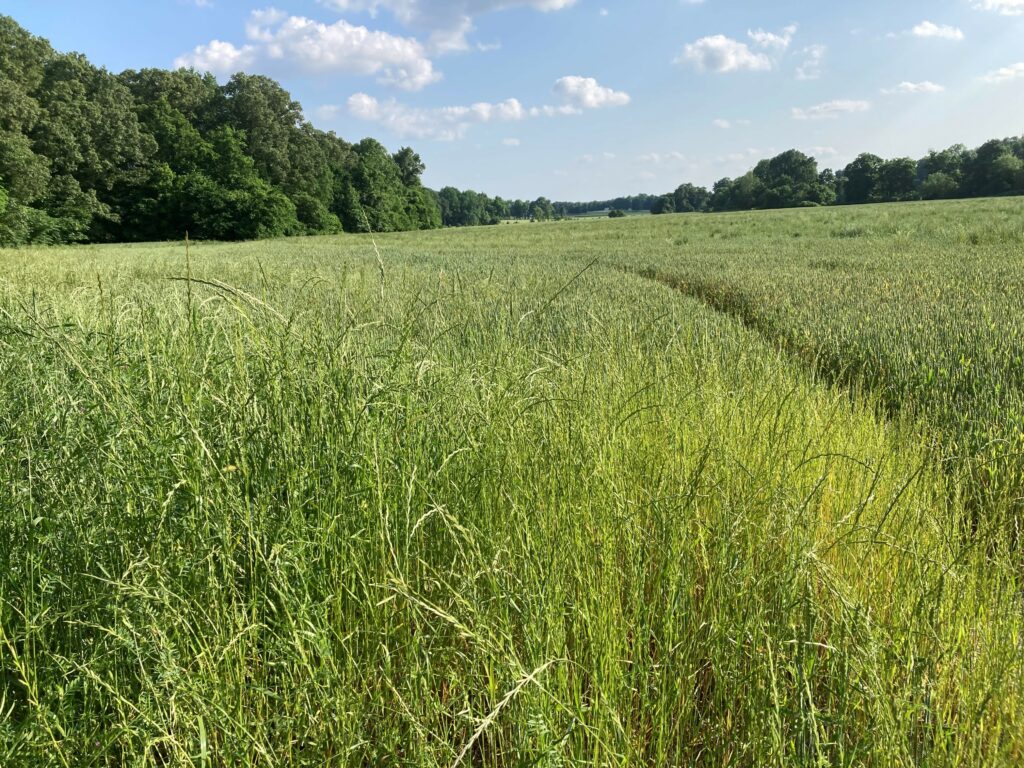
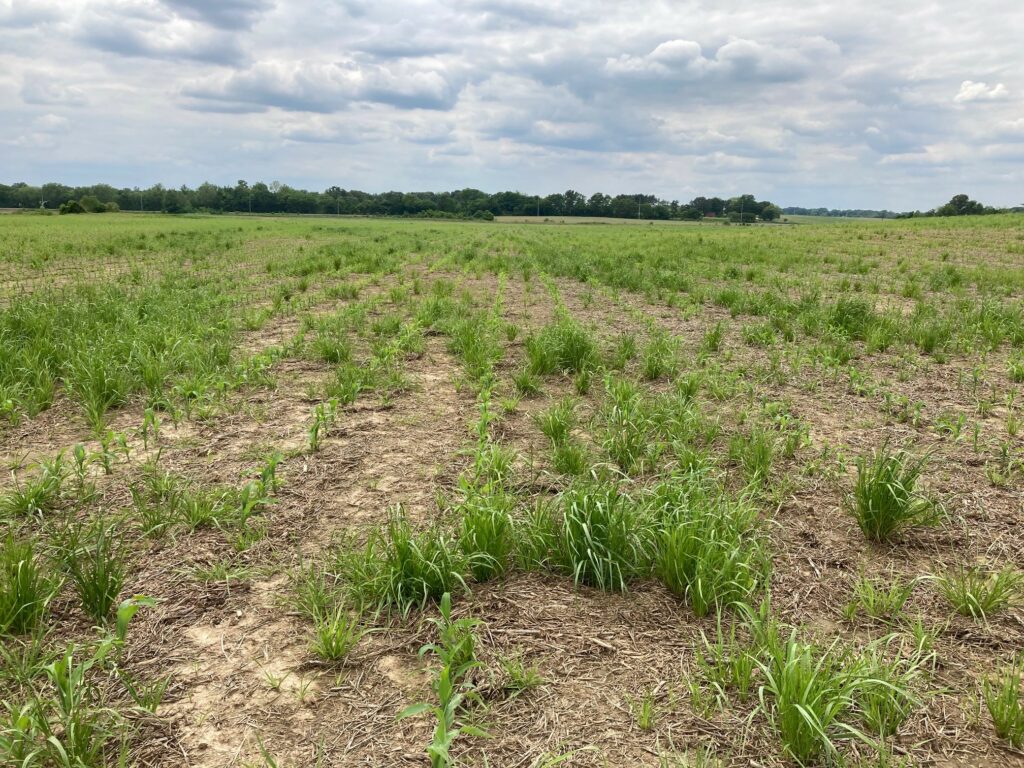
Ryegrass has moved from being an aggravation 10 years ago to a significant weed issue in our row crops. In wheat at this point, the yield loss caused by the weed has occurred (Picture 1). In cotton and soybeans, clethodim can be used now to push this weed on to maturity. In corn, there is no real solution to controlling it other than spraying the typical POST corn premix and hoping that pushes the ryegrass on to maturity (Picture 2).
The wheat fields that were consistently clean of ryegrass were those treated with either Anthem Maxx, Zidua or Axiom last fall. A good bit of the ryegrass population in the state is resistant to ALS-inhibiting herbicides which renders herbicides like Osprey, Finesse, and Powerflex harmless to ryegrass. Axial Bold has shown improved ryegrass control in spring applications over those ALS-inhibiting herbicides but it does not offer the consistent ryegrass control as those delayed PRE-applications of Anthem Maxx, Zidua or Axiom.
Johnsongrass is also a consistent problem in a good many cornfields. Glyphosate is just not providing any traction in the burndown on Johnsongrass and the POST in-crop applications are no better. Our most recent research funded by the Tennessee Corn Checkoff program has shown that Steadfast Q or Accent Q can still provide good control of Johnsongrass when glyphosate fails.
Thoughts on our last planting window and the next one to come
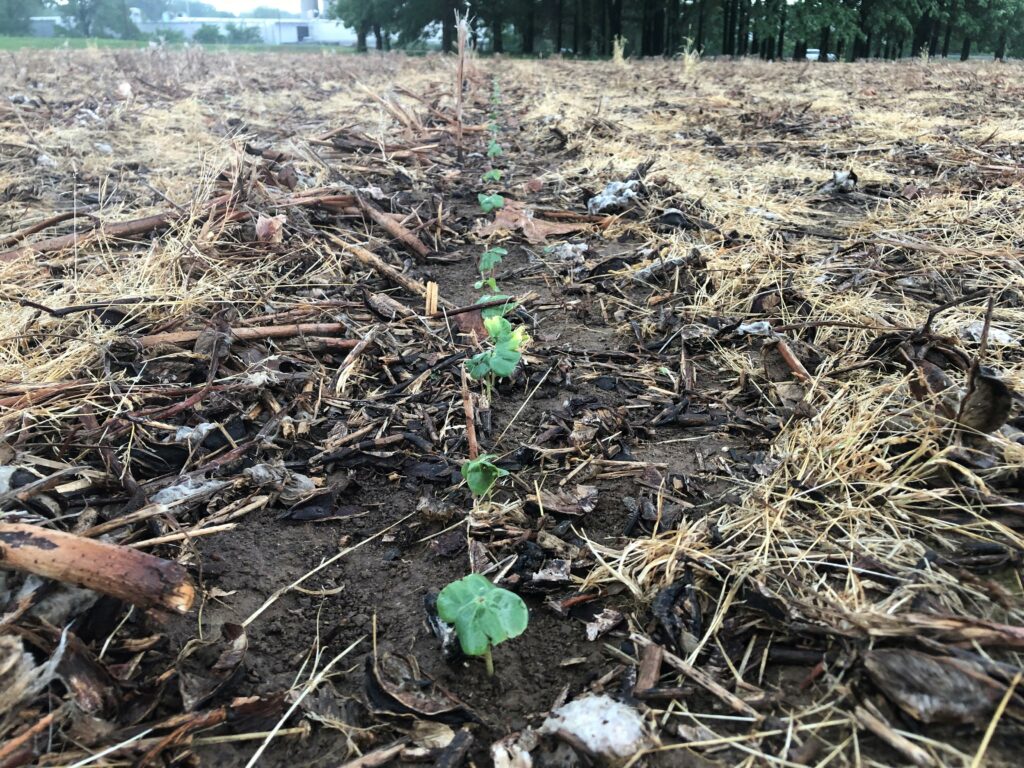 The Extension Cotton Specialists’ Working Group, with funding from Cotton Inc and support from a number of seed companies, has been studying seed quality and the impacts marginal seed have on in-season performance since 2020. I planted the 2022 seed quality trial last Thursday (April 28th) with the expectation that even the best treatments would struggle, based on the forecast. To my surprise, each time I checked the forecast temperatures increased and rain chances shrunk. Some of those treatments emerged yesterday and they rowed this afternoon (pictured above). The planting window that I thought would help separate excellent seed from marginal seed just might make everything look great! Continue reading
The Extension Cotton Specialists’ Working Group, with funding from Cotton Inc and support from a number of seed companies, has been studying seed quality and the impacts marginal seed have on in-season performance since 2020. I planted the 2022 seed quality trial last Thursday (April 28th) with the expectation that even the best treatments would struggle, based on the forecast. To my surprise, each time I checked the forecast temperatures increased and rain chances shrunk. Some of those treatments emerged yesterday and they rowed this afternoon (pictured above). The planting window that I thought would help separate excellent seed from marginal seed just might make everything look great! Continue reading
Still Seeing Good Control with Liberty on Palmer amaranth

Results from our greenhouse screens of Palmer amaranth to Liberty has been very encouraging. We feared that the Liberty resistance documented in Arkansas had crossed the river. The good news is that we have seen good control with a 32 oz/A rate of Liberty on all the Palmer populations tested (Picture 1). Continue reading

